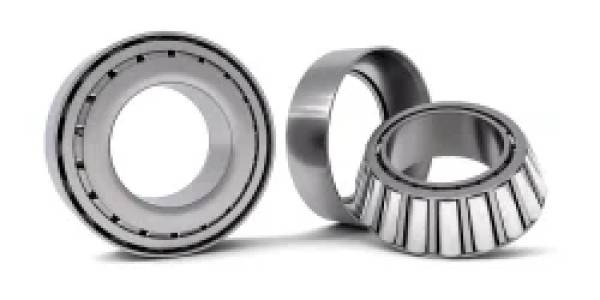Description
Tapered Roller Bearings: Precision and Durability for High-Load Applications
Tapered roller bearings are a type of rolling-element bearing that utilizes tapered rollers to handle both radial and axial loads simultaneously. Their unique design makes them ideal for applications requiring high load capacity, speed, and precise operation. Unlike ball bearings, which primarily handle radial loads, tapered roller bearings excel in situations demanding both radial and thrust forces.
Key Features & Benefits:
- High Load Capacity: The tapered rollers distribute loads effectively across a larger contact area compared to other bearing types, resulting in significantly higher radial and thrust load capacities. This makes them suitable for heavy-duty machinery and high-stress environments.
- High Speed Capability: Properly designed and lubricated tapered roller bearings can operate at high speeds, minimizing friction and heat generation. This is crucial for applications requiring smooth, efficient rotation.
- Self-Aligning Capability (to a degree): While not as self-aligning as spherical roller bearings, the tapered design allows for a degree of misalignment, making them more tolerant to minor shaft deflections or housing imperfections.
- Precise Operation: Tapered roller bearings offer high rotational accuracy and precision, crucial for applications demanding tight tolerances and smooth movement.
- Long Service Life: With proper installation, lubrication, and maintenance, tapered roller bearings are known for their extended service life, minimizing downtime and replacement costs.
- Various Configurations: Available in a wide range of sizes, configurations (single row, double row, four-row), and materials to suit diverse application requirements. Specific configurations can optimize for different load and speed priorities.
Applications:
Tapered roller bearings are widely used in a variety of industries and applications including:
- Automotive: Wheels, transmissions, differentials
- Industrial Machinery: Conveyors, rolling mills, gearboxes, wind turbines
- Agricultural Machinery: Tractors, harvesters
- Railroad: Locomotives, rolling stock
- Aerospace: Landing gear, rotating machinery
Technical Specifications (General):
- Inner Ring: Houses the tapered rollers and typically fits onto a rotating shaft.
- Outer Ring: Houses the tapered rollers and typically fits into a stationary housing.
- Rollers: Tapered cylindrical rollers that distribute loads between the inner and outer rings.
- Cage/Retainer: Separates and spaces the rollers to prevent contact and ensure even load distribution.
- Materials: High-quality bearing steel, often hardened and treated for superior durability and resistance to wear. Various material options may be available for specific applications (e.g., corrosion resistance).
Selection Considerations:
Choosing the right tapered roller bearing depends on several factors, including:
- Load requirements (radial and axial): Determine the maximum loads the bearing will experience.
- Speed: Consider the operating speed to select a bearing with appropriate design parameters.
- Shaft and housing dimensions: Ensure proper fit and mounting.
- Operating environment: Account for factors such as temperature, humidity, and contaminants.
Proper Installation and Maintenance are Crucial: Incorrect installation or inadequate lubrication can severely reduce bearing life and performance. Consult the manufacturer's guidelines for proper installation, lubrication, and maintenance procedures.
Note: This is a general description. Specific details and specifications will vary depending on the manufacturer and the particular bearing model. Always consult the manufacturer's documentation for detailed technical information.
